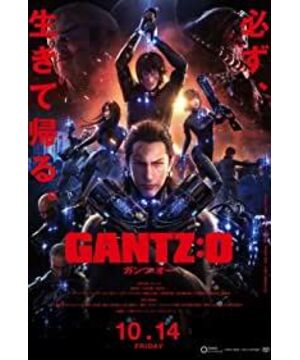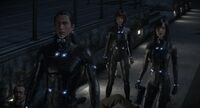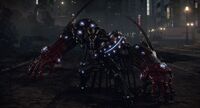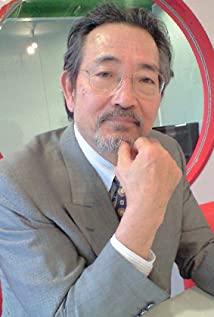First of all, the film uses a lot of Japanese mythical monsters - Datengu, Shenyu, Niugui - and one or two similar to Western mythology. The demons in the book - Satan, Lucifer - I personally think that this is the author's metaphor for the impact of Western religious culture on Japan's native religious culture. Furthermore, the characters in the film cover almost all the constituents of Japanese society: junior high school students, burly high school students, left-behind children, middle-aged men, elderly couples, underworld elements, mixed-race people, female stars, young single mothers, self-defense forces Members, office workers, athletes, idiots, etc.
The detailed depiction and expression of all the characters are full of the author's interpretation and satire of contemporary Japanese society, such as: old couples are still desperately trying to protect their grandchildren in the face of powerful unknown creatures - the greatness of family love - I interpret this family relationship as: In the era of low birth rate in Japan, the emphasis on children is higher than that of Hong Kong reporters.
Then there is the middle-aged uncle: the middle-aged uncle has a negative attitude towards everything, is afraid of things, refuses to try, refuses to take risks, refuses all actions that he thinks are risky, "thinking", "membrane", and traps himself in The "Jiang Bureau" of the Midlife Crisis. I just want to return to the ordinary and be a mediocre person - lazy, ignorant, pedantic - I understand the portrayal of middle-aged men as: such a person is actually the mainstay of contemporary Japanese society, expressing the author's negative attitude towards the middle-aged generation The irony of this may also be speculation about the reasons for Japan's current decline in production value and economic downturn. Or, middle-aged people just think that there is no need to live too tired - anyway, they can't change this helpless world - a kind of Give up the salty fish gesture of chasing your dreams. When he handed the coin to the male protagonist, he might want to tell the male protagonist: life is just another "survival game", a survival game that requires many responsibilities, uncle, I don't want to carry it, you are still young .
Next, there is the second-year junior: this role should represent the post-00s generation in Japan. The self, the second, has an excellent adaptability to new things, and will always bring you "surprise" unexpectedly - however, such a Children often show a look: lack of discipline, cynicism, and want to kill you immediately if you don't agree, this is worth thinking about.
Bald-headed hooligan and smoking man, these two characters: I define them as the real "villains" in the film, for the following reasons: they love to pretend, selfish, philistine, greedy, bully, no love, even if the two There is a cooperative relationship, and the bald guy did not take decisive action when he pretended to be in urgent need of rescue - this alone is enough to see his stupidity and naive, and the pretender also paid for his greed due price. These two villains represent two different unstable factors in Japanese society - the smart bad guys and the mentally handicapped bad guys.
Members of the Self-Defense Forces: The Japanese Self-Defense Forces members who appear in the film have almost negligible grasp of the world in the film, a group of people who are completely confused about the situation. When facing the unknown, these team members showed extremely inefficient ability to handle critical situations, which ironically satirized the state of the Japanese government authorities in the face of social crises. I feel sorry for these team members who are used as tools. They are so powerless and miserable in the face of "magnificent power". The team members wearing shrunken U.S. military equipment will die in two or three times. This may be the author's opinion on " Let’s lament the fact that the U.S. dominates Japan”—without its own armed forces, it cannot be on the stage of the earth’s hegemony, cannot win the final dominance of the earth, and cannot lead all mankind to deep space.
Since there is no conventional military force, let's take a slanted sword and develop asymmetrical forces - the portrayal of the plot in this film is also very unique, showing the personality of the Japanese nation. For example, when Okahachiro drives a giant mecha against an equally huge "bull ghost", no matter how powerful the mecha is, no matter how powerful the attack is, he will not be able to defeat the symmetrical "bull ghost" anyway. And when Okahachiro gave up the mecha and retreated to use the "advanced personal combat armor" to make a point-to-point breakthrough against the "bull ghost", the scale of victory finally fell to him. Isn't such a scenario the practical application of the strategic thinking of "disrupting the opponent from the tactical level"?
The design of the character name "Okahachiro" is also very interesting. He has won seven games in a row, and it is his "eighth battle" in the film. I don't know if the author wants to reveal to the audience through this name: "Stop No. 1" Eight" is a little spoiler.
In the final boss battle, what the author wants to express may be the same scenario: as long as weak individuals, as long as they unite, cooperate and persevere, even if they are facing a single individual as powerful as a god, they can be disintegrated from a tactical level. .
After reading these two episodes, I deeply feel that the Japanese nation's obsession with "asymmetric confrontation" will inevitably lead to the resurrection of militarism, nourish the spread of right-wing extremists, and begin to try to infect China.
The film's description of human nature is also very attentive. The memory at the end is killing, expressing to the audience: In fact, it is not the first time that the burly and kind high school male protagonist has played this game, but no matter how many times the archive is reset, he always They will choose to rescue their teammates first, and when no one wants to be rescued, they will choose to return to their ordinary life. The image of the male protagonist in the film is not stalwart, but it gives people a feeling of "savior". This may also be the author's good expectations for high school students in the new era, and hopes that a new generation of young people can lead Japan out of the country. In the current predicament of declining national strength, we have embarked on the road of prosperity and prosperity.
The following contains a lot of spoilers, please read down selectively:
Throughout the whole film, the main characters in it are people who have "dead" - in order to rescue passers-by who were innocently hacked to death by mask killers, they missed celebrating the birthday of their younger brother and their parents. A burly and kind high school student hero who died; a young and angry single mother who may commit suicide because he can't bear the pressure of life but is willing to block your gun at a critical moment; a middle-aged man who claims to have died of a stroke and seems useless but has a kind and caring heart; The big-breasted female star who died in a car accident at the critical moment can save you; the middle-2 teenager who will assist you at the critical moment of the second-year death; the arrogant and arrogant who died of mental retardation; The author wants to express the strong desire for "a beautiful Japan" through the "sacrifice" of these characters. And the narration at the end of the film is also connected to the picture at the beginning, and the story is written as a closed circle, um... Maybe not closed, but overlapping - the process of human progress is a spiral process - No wonder history is always strikingly similar, and probably for that reason.
There are still some interpretations of the lines. I don't want to write them anymore. There are more than 2,000 words. If you think this movie is interesting, just search and download it to savor it. Remember it's the 2016 version, there's a milk shake version!
call the father
2017.3.15
View more about Gantz: O reviews











